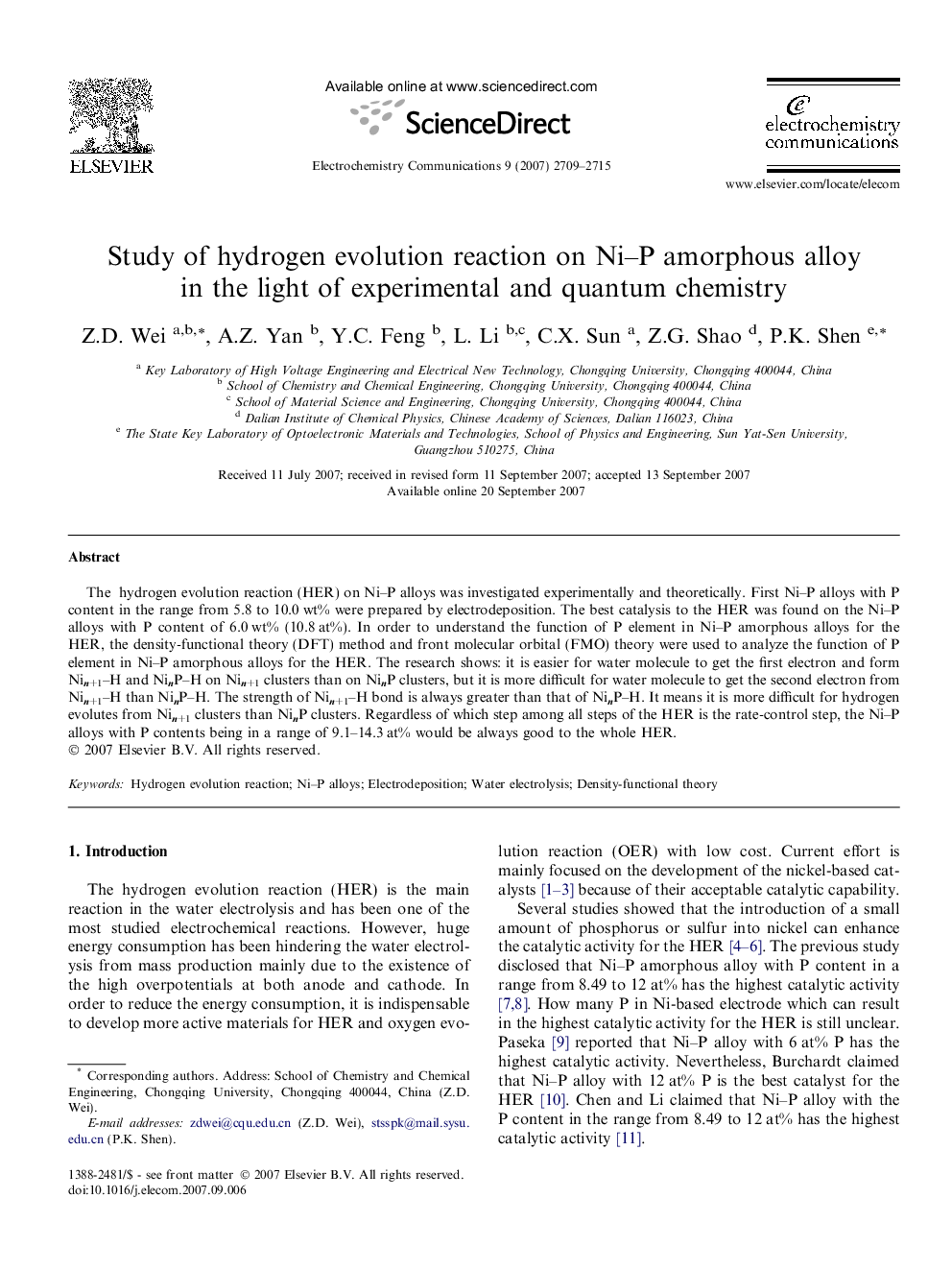| Article ID | Journal | Published Year | Pages | File Type |
|---|---|---|---|---|
| 182141 | Electrochemistry Communications | 2007 | 7 Pages |
The hydrogen evolution reaction (HER) on Ni–P alloys was investigated experimentally and theoretically. First Ni–P alloys with P content in the range from 5.8 to 10.0 wt% were prepared by electrodeposition. The best catalysis to the HER was found on the Ni–P alloys with P content of 6.0 wt% (10.8 at%). In order to understand the function of P element in Ni–P amorphous alloys for the HER, the density-functional theory (DFT) method and front molecular orbital (FMO) theory were used to analyze the function of P element in Ni–P amorphous alloys for the HER. The research shows: it is easier for water molecule to get the first electron and form Nin+1–H and NinP–H on Nin+1 clusters than on NinP clusters, but it is more difficult for water molecule to get the second electron from Nin+1–H than NinP–H. The strength of Nin+1–H bond is always greater than that of NinP–H. It means it is more difficult for hydrogen evolutes from Nin+1 clusters than NinP clusters. Regardless of which step among all steps of the HER is the rate-control step, the Ni–P alloys with P contents being in a range of 9.1–14.3 at% would be always good to the whole HER.
